|
|
|
|
 |
|
|
 |
| |
Study Location:
The study was conducted approximately 90 kilometers northwest of Peace River in the Clear Hills Upland, Lower Foothills Ecoregion of Alberta (Figure 1). The site is characteristic of a boreal mixedwood composition with the main dominant tree species being Trembling Aspen (Populus tremuloides), Balsam Poplar (Populus balsamifera), and White Spruce (Picea glauca).
The forests in the study area were of fire origin and ranged from 80-120 years in age, which is considered to be an "old growth" stand in this region. The study made use of deciduous dominated stands (>70% of overstory canopy composed of deciduous species) and conifer dominated stands (>70% of overstory canopy composed of coniferous species). Within these sites we sampled ground beetles through the use of pitfall traps during the summer of 2006.
|
Figure 1: Map of study site location.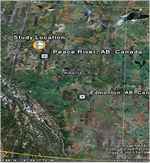 Click photo for a larger image. Click photo for a larger image.
|
|
| |
Why Study Ground Beetles?
Ground beetles (Coleoptera: Carabidae) are a diverse family of arthropods with numerous species filling a wide range of ecological roles. Within the ground beetles many species are dependent on intact forests, sensitive to disturbances, or specialists on other forest dwelling arthropods. This diversity makes ground beetle communities very responsive to fine scale disturbances, such as forest harvesting, which allows us to identify key features of disturbances which promote, or harm the persistence of these communities. Combined, these characteristics make them effective for use as indicator communities in answering forest fragmentation questions.
|
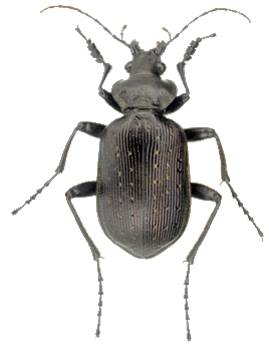 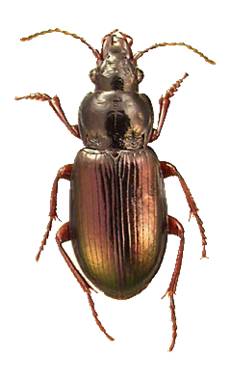
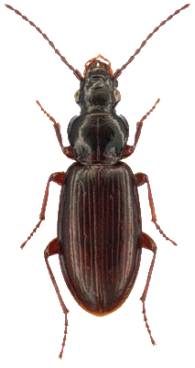 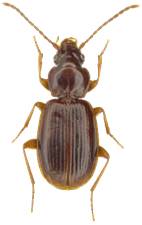 Photo Credits: Henri Goulet Photo Credits: Henri Goulet
|
|
 |
 |
|
 |
|
|
 |
|
 |
| |
Experimental Design:
In the summer of 2006 I sampled ground beetles using pitfall traps within conifer dominated and deciduous dominated stands, (Figure 2).
To assess the cover type objective I sampled stands that were 2 years since harvest within both of the forest cover types.
The edge recovery objective was assessed by sampling a chronosequence of harvest ages within the deciduous dominated cover type. This chronosequence consisted of edges which were 2, 8, and 15 years since harvest (Figure 2).
|
|
| |
Sampling Design:
Pitfall traps were placed along transects running from the forest edge to the forest interior (Figure 3). Sampling occurred every 15 meters along the transect up to 105 meters into the intact forest. To ensure independence between samples, a series of two trap lines were used to maintain a minimum distance of 25 meters between traps (Digweed et al., 1995). In order to ensure the variability expected along the forest edge was adequately sampled, a second replicate transect was erected a minimum of 100 meters away. These replicates were pooled within sites for data analysis. In addition, two traps were placed in the clear-cut sites, a minimum of 50 meters from the forest edge (Figure 3).
|
|
 |
 |
 |
|
|
|
|
|
|
|